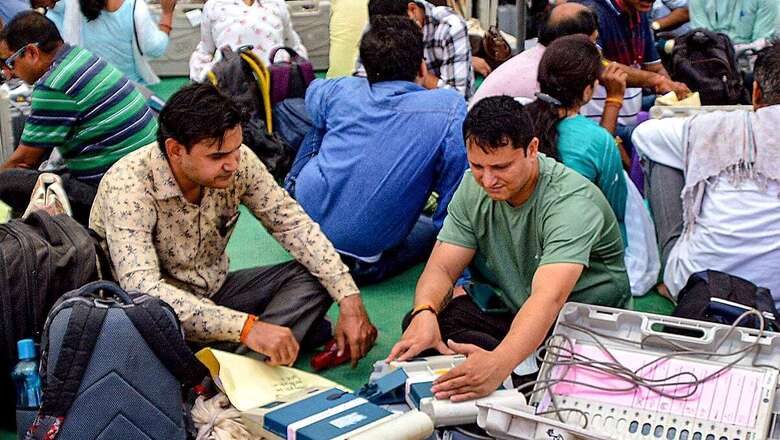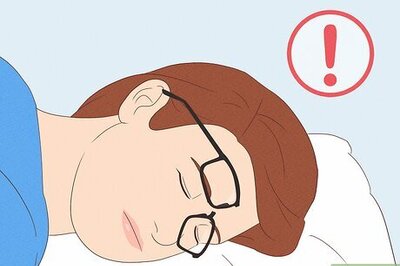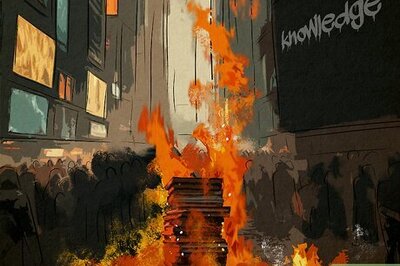
views
It’s not all about faring well, the UP civic body elections are also about feeling the pulse ahead of the 2024 Lok Sabha polls. In fact, the political ‘pundits’ and associates of political parties are calling the urban body elections the first litmus test that would not only pave the way for 2024 but also decide fresh strategies for major political players to woo voters and secure their vote banks in the Hindi heartland.
The first phase of the Uttar Pradesh urban local elections (Nagar Nigam, Nagar Palika and Nagar Panchayat) was on May 4, where 46 percent voting was recorded. Polling to elect urban body chiefs in 37 districts of the state was held in nine divisions and 10 municipal corporations.
In the first phase, as per official figures, around 2.4 crore exercised their franchise to elect 10 mayors, 820 councillors, 103 municipal council presidents, 2,740 member municipal councils, 275 presidents, including 3,645 municipal council members. Second phase polling will be held on May 11 to elect representatives for posts across 760 local bodies. The counting of votes will take place on May 13.
66% candidates independent
In both the phases, over 66 percent of the total candidates are independents while the number of female contestants far exceeds the minimum 33 percent quota limit, as per poll data received from the state election commission (SEC). As many as 85 candidates in the first phase and 77 candidates in the second phase have already been declared elected unopposed.
Among political parties, the ruling BJP has fielded the highest number of candidates, followed by the Samajwadi Party, Bahujan Samaj Party, Congress and AAP. Data shows that over 83,000 candidates are contesting for 14,684 posts of mayors, corporators, nagar palika chairpersons, members and nagar panchayat chairpersons and members in 760 local urban bodies, including 17 nagar nigams, 199 nagar palika parishads and 544 nagar panchayats (semi-urban local urban bodies).
It is seen that over 55,600 of the total contestants in the fray are independents, who account for close to 67 percent of the total strength of candidates. In the first phase, 44,232 candidates are in the fray, of which 29,683 are independents while in the second phase 26,000 of the 39,146 candidates are independents.
The data further shows that 35,102 women are contesting different posts and their share in the total number of candidates comes to above 42 percent, which is far more than the minimum 33 percent reservation provided to women under the Constitution. Among independent candidates, too, 42.53 percent are women. There are 18,581 women candidates in the first phase and 16,521 in the second.
‘Maximum number of Muslim candidates fielded by BJP’
The BJP has fielded 10,758 candidates (including 4,248 women), the highest among all parties. The SP has fielded the second highest number of candidates – 5,231 (2,223 women), followed by the BSP’s 3,787 (1,611 women). The Congress and AAP have fielded 2,994 (1,395 women) and 2,447 (1,031 women) candidates, respectively.
More than 46 percent of the candidates fielded by the Congress are women and this appears to be higher than that of all other main political players. Among BJP candidates, 39.48 percent are women, which is lower than that of the BSP (42.54%), the SP (42.49%) and AAP (42%).
“We all have seen that the BJP, which bears an anti-Muslim image, has fielded maximum number of Muslims in these elections. Another surprise came when the former chief minister and BSP chief decided to name 11 Muslims for 17 mayoral seats. The SP did not field a single Yadav candidate in the mayoral polls, which was another surprise element. Congress too is planning to campaign for some seats. So, as I said earlier, these urban body polls will further make the bigger picture clear. It will be a test for the political parties,” said Shashikant Pandey, head of the department of political science at Babasaheb Bhimrao Ambedkar University in Lucknow.
Pandey further said the move will scatter the minority vote to the BJP’s advantage. Recently, as the new state BJP chief Bhupendra Chaudhary took charge, the first immediate task before him was to invigorate the party organisation for the urban local bodies elections.
Will BJP retain supremacy?
Analysts see these polls as setting the party’s template for the 2024 elections. Sources in the BJP said Chaudhary was expected to hit the ground running even as the party strives to retain its supremacy in urban areas.
In the previous urban local bodies poll held in 2017, the BJP had won 14 out of 16 municipal corporations. The remaining two – Meerut and Aligarh – were won by the BSP. Likewise, of the 198 Nagar Palika Parishad chairperson posts, the BJP had won 47, the BSP and SP 29, and Congress five. The rest of the seats were won by independents. In the polls for 438 Nagar Panchayat chairpersons, BJP had won 81 seats, SP 67, BSP 34 and Congress 15.
The elections were held after the BJP returned to power in UP with a thumping majority in 2017. With the BJP retaining power under the leadership of chief minister Yogi Adityanath in 2022, it will now seek to capitalise on its position in the urban local bodies as well.




















Comments
0 comment